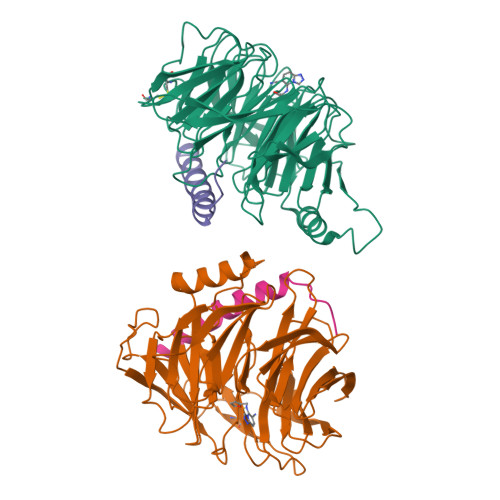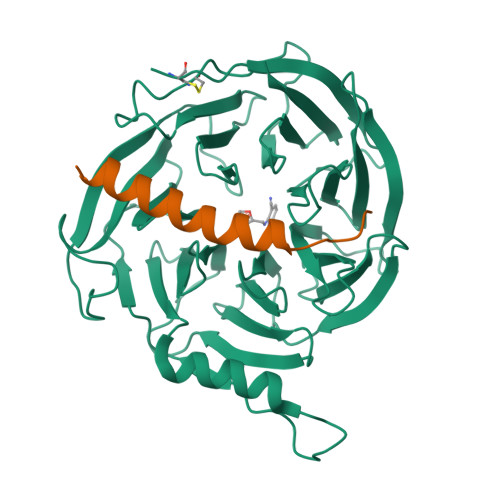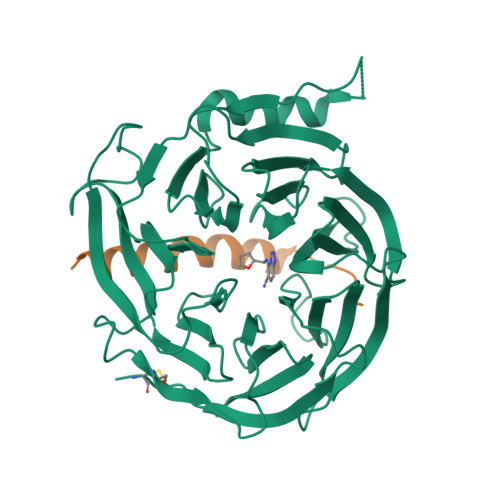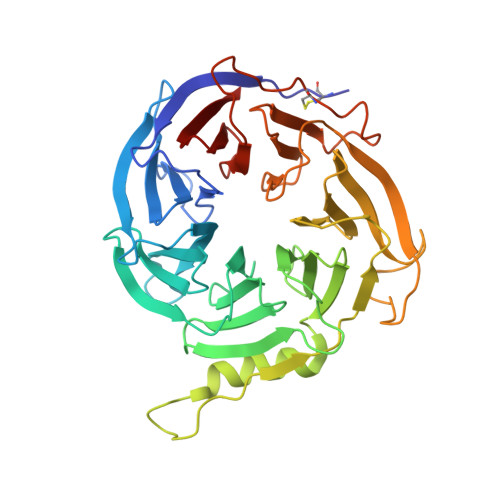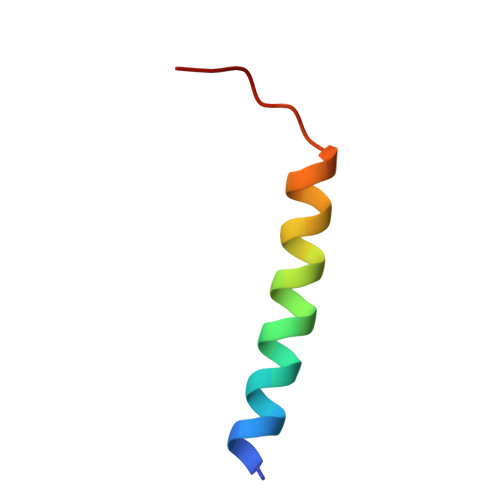Discovery of First-in-Class, Potent, and Orally Bioavailable Embryonic Ectoderm Development (EED) Inhibitor with Robust Anticancer Efficacy
Huang, Y., Zhang, J., Yu, Z., Zhang, H., Wang, Y., Lingel, A., Qi, W., Gu, J., Zhao, K., Shultz, M.D., Wang, L., Fu, X., Sun, Y., Zhang, Q., Jiang, X., Zhang, J., Zhang, C., Li, L., Zeng, J., Feng, L., Zhang, C., Liu, Y., Zhang, M., Zhang, L., Zhao, M., Gao, Z., Liu, X., Fang, D., Guo, H., Mi, Y., Gabriel, T., Dillon, M.P., Atadja, P., Oyang, C.(2017) J Med Chem 60: 2215-2226
- PubMed: 28092155
- DOI: https://doi.org/10.1021/acs.jmedchem.6b01576
- Primary Citation of Related Structures:
5H24, 5H25 - PubMed Abstract:
Overexpression and somatic heterozygous mutations of EZH2, the catalytic subunit of polycomb repressive complex 2 (PRC2), are associated with several tumor types. EZH2 inhibitor, EPZ-6438 (tazemetostat), demonstrated clinical efficacy in patients with acceptable safety profile as monotherapy. EED, another subunit of PRC2 complex, is essential for its histone methyltransferase activity through direct binding to trimethylated lysine 27 on histone 3 (H3K27Me3). Herein we disclose the discovery of a first-in-class potent, selective, and orally bioavailable EED inhibitor compound 43 (EED226). Guided by X-ray crystallography, compound 43 was discovered by fragmentation and regrowth of compound 7, a PRC2 HTS hit that directly binds EED. The ensuing scaffold hopping followed by multiparameter optimization led to the discovery of 43. Compound 43 induces robust and sustained tumor regression in EZH2 MUT preclinical DLBCL model. For the first time we demonstrate that specific and direct inhibition of EED can be effective as an anticancer strategy.
Organizational Affiliation:
Novartis Institutes for BioMedical Research , 4218 Jinke Road, Shanghai 201203, China.








